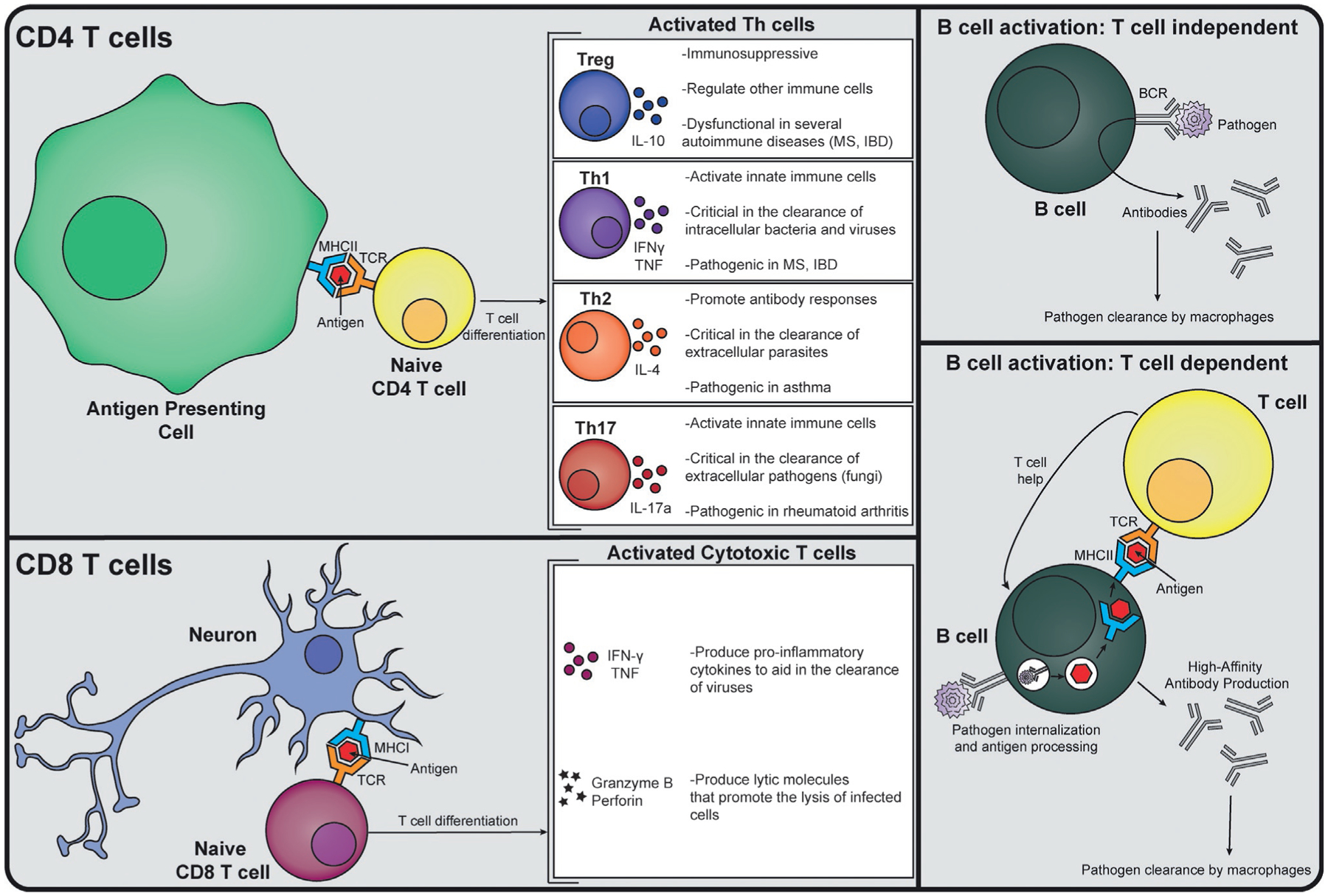FIG. 2.

Overview of Adaptive Immune Responses. CD4 T cells (yellow) interact with antigen presenting cells (APCs, green) via an antigen-loaded MHCII molecule, and costimulatory molecules (not shown). Upon antigen recognition by their T cell receptor (TCR), a CD4 T cell can differentiate into a Treg, Th1, Th2, or Th17 cell type, which have different roles in inflammation and produce signature cytokines. A CD8 T cell (maroon) interacts with antigen-loaded onto an MHCI molecule, which can be displayed on the surface of any cell, including neurons (blue). Upon antigen recognition by the TCR, a CD8 T cell will differentiate and produce inflammatory cytokines and lytic molecules. B cells (dark green) can act with or without the help of T cells. The B cell receptor (BCR) can recognize extracellular pathogens (purple), leading to the production and secretion of antibodies targeted toward that pathogen. A B cell can also recognize a pathogen via its BCR, process it, and load an antigenic peptide onto an MHCII molecule, which can then interact with the TCR of a CD4 T cell (yellow). This results in the production of high affinity antibodies targeted toward the pathogen that will promote that pathogen’s clearance.
